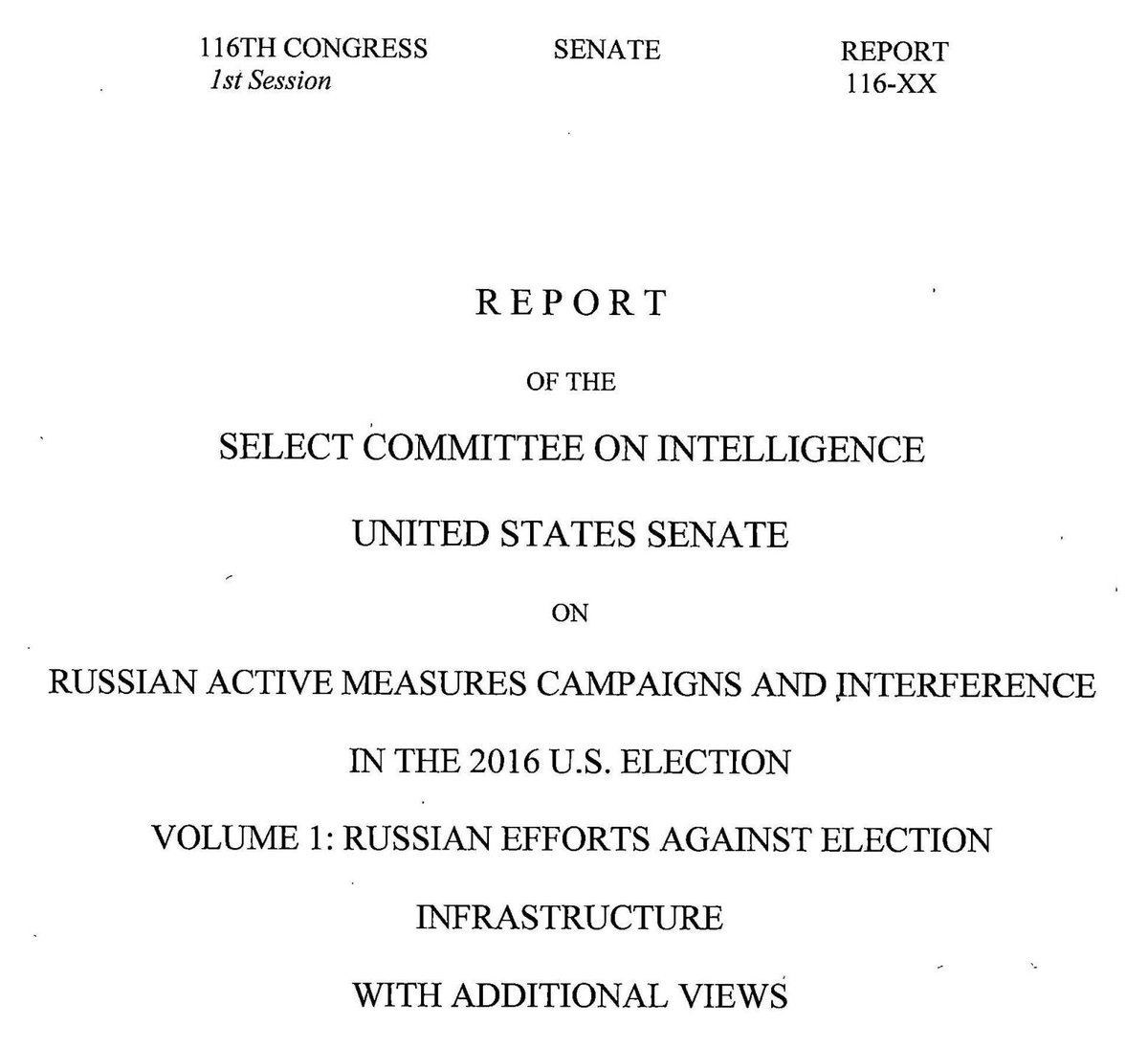REPORT on RUSSIAN ACTIVE MEASURES CAMPAIGNS and INTERFERENCE in the 2016 US ELECTION
VOLUME 1: RUSSIAN EFFORTS AGAINST ELECTION
INFRASTRUCTURE
THREAD/
#SenateRussiaReport
From 2017 to 2019, the Committee held hearings, conducted interviews, and reviewed intelligence related to Russian attempts in 2016 to access election infrastructure.
V1 p3
#SenateRussiaReport
The Russian government directed extensive activity, beginning in at least 2014 and carrying into at least 2017, against US election infrastructure' at the state and local level.
◼️ = redacted
◼️
#SenateRussiaReport
V1 p3
DHS and some states asked the Committee to protect state names before providing [us] with info.
Where .. public testimony by Illinois state election officials, that state is identified
3. While the Committee does not know with confidence what Moscow's intentions were, Russia may have been probing vulnerabilities in voting systems to exploit later.
#SenateRussiaReport
V1 p4
The US intelligence apparatus is, by design, foreign-facing, with limited domestic cybersecurity authorities except where the Federal Bureau of Investigation..
State election officials, who have primacy in running elections, were not sufficiently warned or prepared to handle an attack from a hostile nation-state actor.
#SenateRussiaReport
V1 p4
5. DHS and FBI alerted states to the threat of cyber attacks in the late summer and fall of 2016, but the warnings did not provide enough information or go to the right people.
#SenateRussiaReport
V1 p4
In '16, cybersecurity for electoral infrastructure at the state and local level was sorely lacking; for example, voter registration databases were not as secure as they could have been
Despite the focus on this issue since 2016, some of these vulnerabilities remain.
#SenateRussiaReport
V1 p4
National Association of State Election Directors (NASED), and other groups have helped DHS in this effort.
election infrastructure,
#SenateRussiaReport
V1 p4
#SenateRussiaReport
V1 p5
States should be firmly in the lead for running elections.
but each operator should be keenly aware of the limitations of their cybersecurity capabilities and know how to quickly and properly obtain assistance.
#SenateRussiaReport
V1 p5
In its review of the 2016 elections, the Committee found no evidence that vote tallies were altered or that voter registry files were deleted or modified,
though the Committee and IC's insight into this is limited.
unprecedented level of activity against state election infrastructure in the run-up to the 2016 U.S. election ◼️
#SenateRussiaReport
V1p5
In mid-July 2016, Illinois discovered anomalous network activity, specifically a large increase in outbound data, on a Illinois Board of Elections' voter registry website.
In mid-July '16, Illinois discovered anomalous network activity, specifically a large increase in outbound data, on a Illinois Board of Elections voter registry website.
V1 p6
The attack resulted in data exfiltration from the voter registration database.
#SenateRussiaReport
V1 p6
The FLASH product did not attribute the attack to Russia or any other particular actor.
touched their infrastructure.
#SenateRussiaReport
V1 p7
internet sensors, identified another 20 states whose networks had made connections to at least one IP address listed on the FLASH.
Former Special Asst to the President and Cybersecurity Coordinator Michael Daniel said,
V1 p7
(I&A), testified to the Committee on June 21, 2017, that
#SenateRussiaReport
V1 p7





